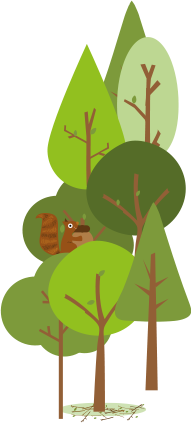

Blog
Archive
I don’t know when they became minibeasts. They were creepy crawlies when I was a child, then became insects or invertebrates if we wanted to be more accurate about it. But minibeasts is the term children are now taught and I like this as the catch-all term for everything from worms and snails through ladybirds and bees to spiders and centipedes. It gets you out of the messy business of having to count numbers of legs, but the term ‘mini-beast’ also makes me think of them of smaller versions of larger animals and puts me in mind of herds of woodlouse grazing dead logs like antelopes on the savannah or fierce ladybirds stalking their prey like lions, which is no bad thing.
Minibeasts is now firmly on the primary curriculum so there’s lots of opportunities to incorporate minibeast hunting into an outdoor session. Equipping them with magnifying glasses, trowels and plastic pots and sending them off to dig holes, turn over rocks and peer under leaves, it is always fantastic to hear their delight at what they find. Adults coming across the Big 6 on a safari would not get as excited! Going on some mini beast hunts with some 4, 5 and 6 year olds recently I noticed how reactions split into 3 camps; the fearful who scream at anything that moves, the curious who want to pick it up and hold it and the bloodthirsty who want to kill it. The sequence usually goes something like this; Curious finds a beetle and manages to capture it in her hand, she shows her trophy to Fearful who screams and tries to run away, but then inches back to have another look. Bloodthirsty comes over to see what all the fuss is about. When the beetle drops from Curious’s hand onto the ground, Bloodthirsty stamps on it before it can escape. Curious is now furious and Fearful becomes tearful.

What would playgrounds look like if children could build them themselves? Maybe something like The Baui, an adventure playground in Hamburg, with its huts, towers, bridges and ladders that the children had created from scratch. I’ve just got back from a study trip with Meynell Games, looking at play and playwork in Germany where I’ve been inspired by some truely great practice. At these construction playgrounds children are given wood, tools, nails and free reign to build the playspace as they chose. The concept is not unique to Germany. There is one, The Big Swing, not far from me in Eccleshill, Bradford, but its the only one I know of in West Yorkshire whereas in Hamburg and Berlin there seems to be one in every neighbourhood. Thousands of children and young people are able to spend all their free time hanging out in these freeform playgrounds that they’ve made for themselves.

There are some brilliant examples of exciting and challenging playspaces in the UK but the ubiquitous primary-coloured swings/slide/climbing frame combination is all too familiar wherever you go in the world. Having grown up with these we might ask ourselves ‘what’s the harm in fixed equipment and safety matting?’, but the trouble is we also grew up with playing outdoors, building dams and dens and generally running free whereas today’s children are much more supervised. The school playground or the park offers the most free play many children get, so we need to make sure it offers variety, risk, challenge and flexibility. We need a wide range of materials, heights and surfaces, we need loose parts which can be arranged and rearranged according to the game and most of all, we as adults need to feel confident in allowing children to managing their own risks. Its time to stop playing it safe.
I’ve been scanning the skies for any sign of aurora borealis, which was predicted to make a rare appearence above the UK this week. I’ve seen some amazing recent pictures taken up in Scotland. However a good helping of cloud and the ambient light pollution in our part Yorkshire are making sure the only northern light we can see is the orange glow of Bradford street lighting. This wasn’t the case when I was down in Herefordshire at the weekend. England’s least populated county has virtually no light pollution making stargazing on a clear night child’s play. (more…)

